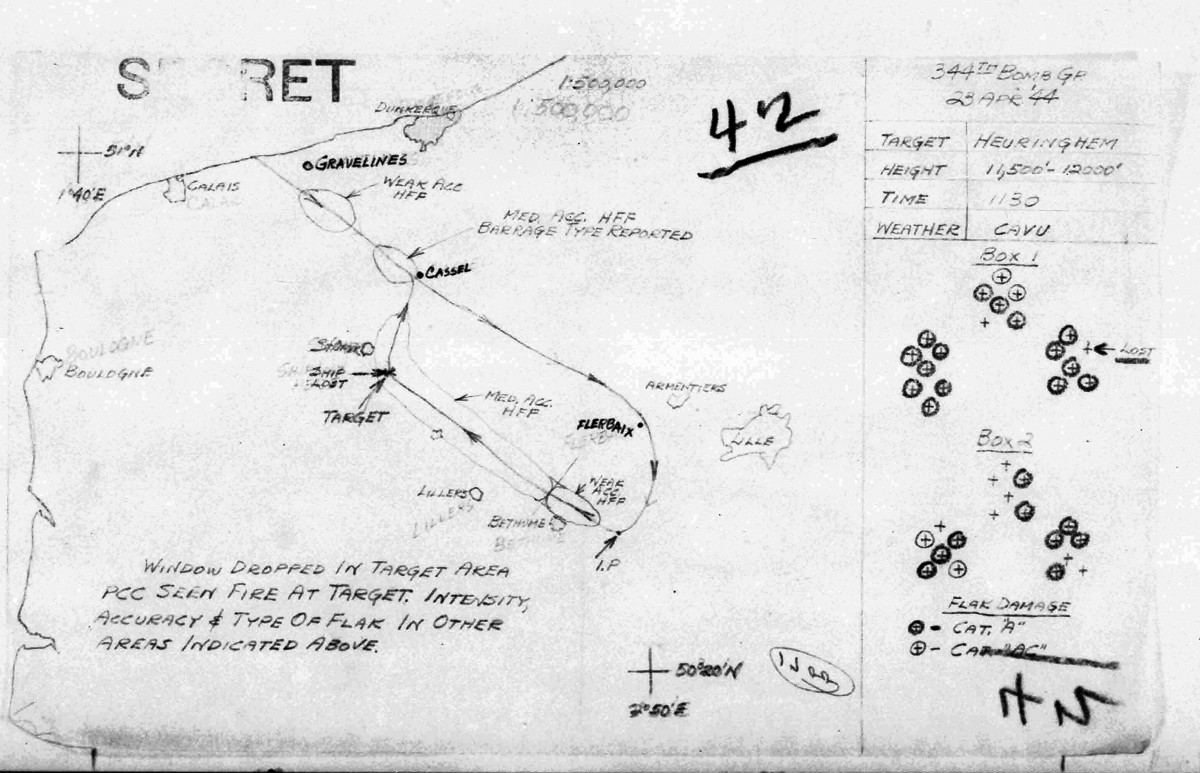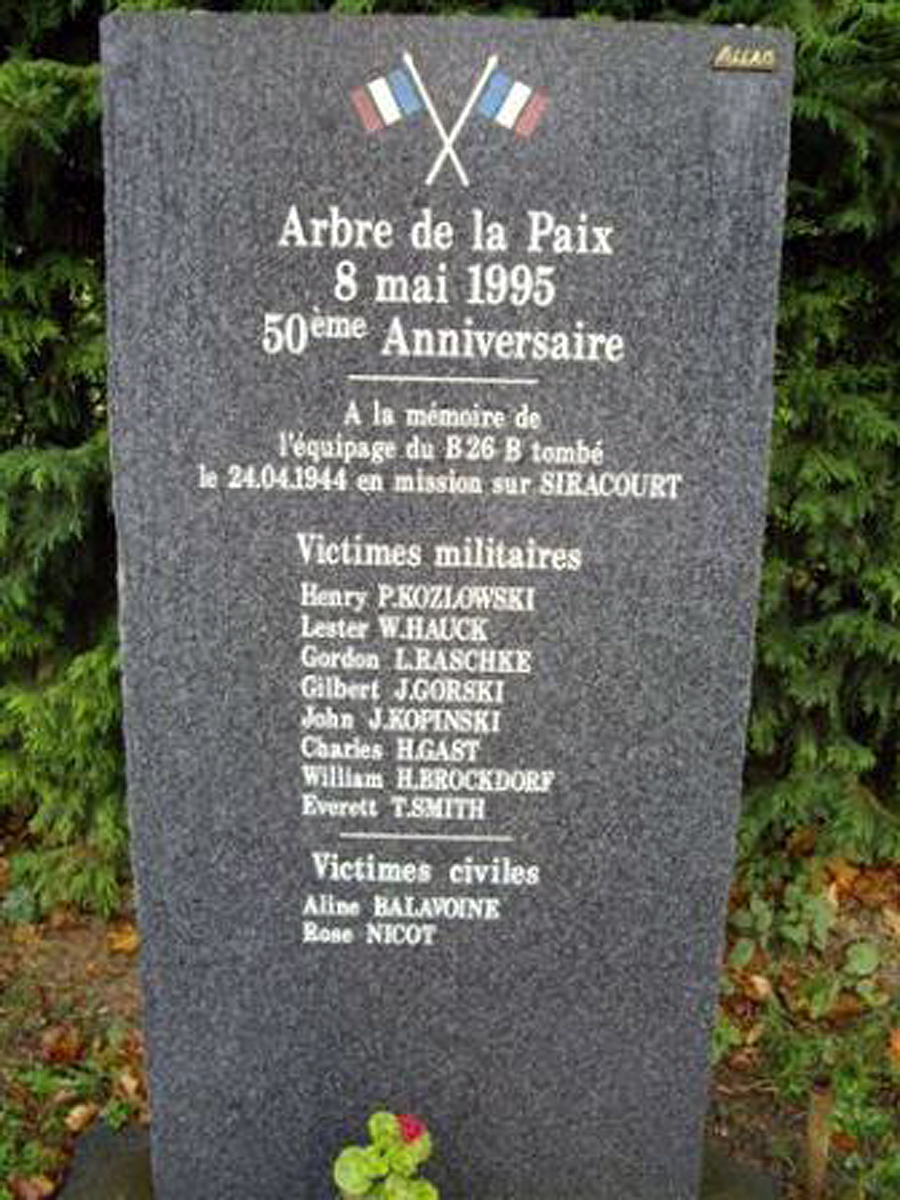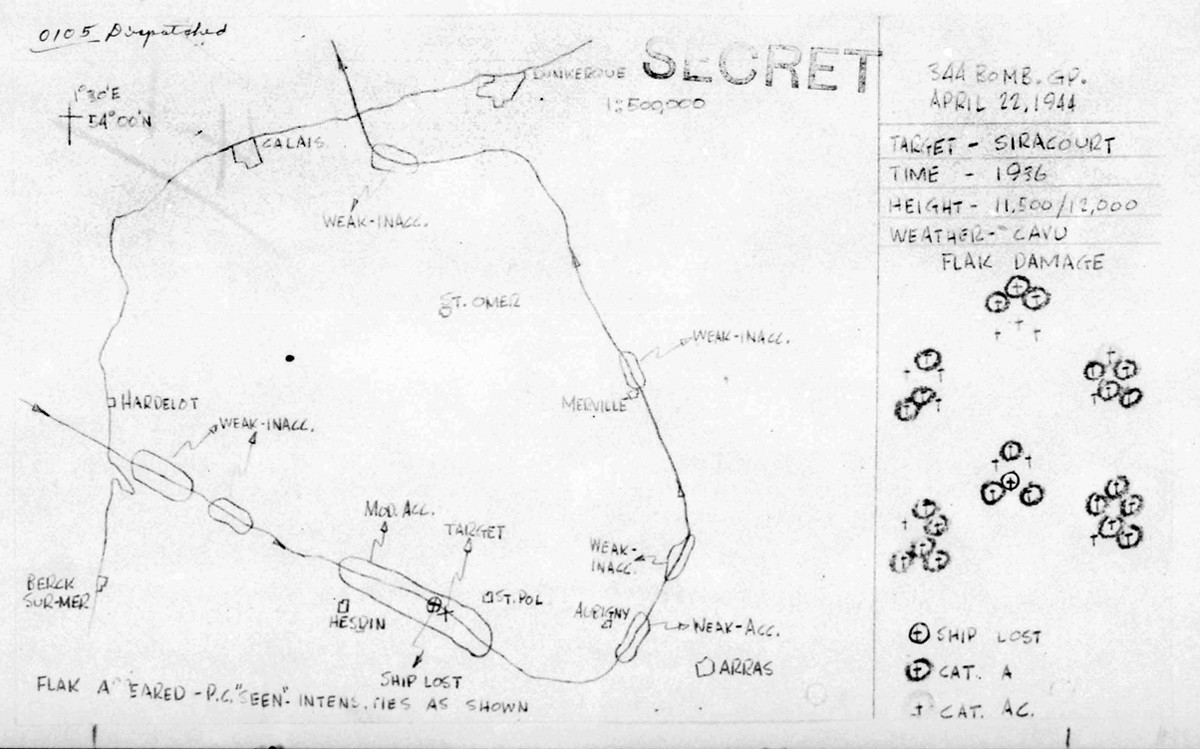S/Sgt. William H. Brockdorf, Sr.
William H. “Bill” Brockdorf, Sr
Click any image to enlarge
| Birth | 16 Nov 1921
Milwaukee, Milwaukee County, Wisconsin, USA |
| Death | 19 May 2014 (aged 92)
West Bend, Washington County, Wisconsin, USA |
| Burial | Valhalla Memorial Park
Milwaukee, Milwaukee County, Wisconsin, USA |
| Memorial ID | 130513567 · View Source |
William H. “Bill” Brockdorf Sr., age 92 of West Bend, left this earth to join his maker and his beloved wife, on Monday, May 19, 2014.
He was born on November 16, 1921 in Milwaukee to the late Emil and Amalia (nee Schieve) Brockdorf.
He was raised in Racine and following high school Bill joined the Civilian Conservation Corp. At the start of WW II he enlisted in the United States Army Air Corp and served as Staff Sergeant on the B-26 “Wizard of Koz” in the European Theater. Bill was shot down over France on April 22, 1944 and became a German POW in Stalag 17-B for a year until the war was over. Please see MACR #4093 for the official record of the crash.
PLANE # 42-959210 (Wizard of Koz)
344TH BG 495TH BS
PILOT – Capt. Henry Premyslaus Kozlowski (killed) 0-24833
COPILOT – 2nd Lt. Lester Winfield Hauck (POW) 0-693040
BOMB- 2nd Lt. Gordon Lester Raschke (killed) 0-738575
NAV- 2nd Lt. Gilbert James Gorski (killed) 0-685592
RADIO/GUN – T/Sgt. John Joseph Kopinski (killed) 36302329
ENG/GUN – S/Sgt. Charles Hubert Gast (POW) 35460604
TAIL/GUN – S/Sgt. William Harold Brockdorf (POW) 16008413
WAIST GUN- S/Sgt. Everett Truman Smith (extra tail gunner, manning waist guns) – killed 37180054
Here is a description of that day:
”
The target for what would prove to be the “Wizard of Koz’s” final mission was a V-1 rocket site at Siracourt, France. Siracourt is located less than five kilometers west of St. Pol, France. This particular V-1 site was one of three from which the Germans intended to launch unconventional weapons, chemical or biological.
The “Wizard of Koz” was nicknamed after her commander, Captain Henry Kozlowski. The aircraft sported unique and flashy nose art, that of a leprechaun-like wizard, long hair tied back with a bow, and riding a bomb amid bolts of lightning.
Siracourt is surrounded by open farming country with few trees and little to no natural cover. The Germans completely rebuilt the town in order to use it to obscure the launch site. All the homes were built from prefabricated materials and all were identical. Intelligence had supplied more than adequate target information. Siracourt had a geometric configuration unlike any other French village. The launch building was located in the northeast section of the village and faced 30 degrees to the east.
The V-1 was the weapon the Germans hoped would change the course of the war, a flying bomb. The rocket was 25 feet 10 inches long with a wingspan of 17 feet six inches and a body diameter of two feet, eight inches. The launch weight was 4,860 pounds with the warhead weighing 1,870 pounds. The range of the rocket was about 150 miles, easily putting London at risk.
Target time for the B-26 raid on Siracourt was set for 1800 hours. The bombing altitude was to be 12,000 feet. The formation flown was a box of 18 aircraft, in three tight groups of six aircraft each. After take off they established their box formation and then proceeded to Dungenes, on the coast of England. They then crossed the channel towards France, passing over the French coast about five miles south of Hardelet. From there the flight headed southeast for Royon and then on to the target at Siracourt.
The “Wizard of Koz” was a box leader and therefore had a crew of eight instead of the usual six. It was necessary for the radio/gunner to maintain radio contact at all times so another gunner was added to the crew. The navigator/bombardier position was also divided, so both a navigator and a bombardier flew in the “Koz.” It was important for the bombardier who was responsible for the accuracy of the whole box to be able to concentrate fully on the bomb run.
Captain Henry Premyslaus Kozlowski, pilot of the “Koz,” was an army brat. His father was Colonel Karol B. Kozlowski, stationed at the Presidio of San Francisco in California.
The co-pilot was Second Lieutenant Lester Winfield Hauck, from Stamford, Connecticut. Navigating was 22-year-old Second Lieutenant Gilbert J. Gorski, from Racine, Wisconsin. The bombardier was was Second Lieutenant Gordon Lester Raschke, from Chicago, Illinois. In the radio compartment was Technical Sergeant John Kopinski, also a Chicago boy. The tail gunner was Staff Sergeant William Brockdorf from Milwaukee, Wisconsin. The waist gunner was Staff Sergeant Everett Trueman Smith, from Kirkwood, Missouri, and the gunner manning the top turret was Staff Sergeant Charles Hubert Gast, from Ripley, Ohio.
There was a slight late afternoon haze over the target. The flight was met with the usual heavy German anti-aircraft fire. Almost immediately after dropping her bombs on the target trouble began for the “Wizard of Koz” and her crew. One of the bombs was hung up in the bomb bay. Just as Sergeant Kopinski kicked the bomb free and away, the “Koz” took a direct flak hit at the radio compartment. Bombardier Gordon Raschke was watching through the bomb sight as the bomb Kopinski freed fell away. The force of the blast of flak threw Raschke against the sight, knocking him unconscious and displacing his jaw. Sergeant Brockdorf was the last to see Kopinski, “a shadow crumbling in the flames of the radio room.”
With the situation desperate, Captain Kozlowski fought to maintain control of the “Koz,” gaining precious time for the crew to bail out. Staff Sergeant William Brockdorf bailed out through the waist window, as did Staff Sergeant Charles Gast. Brockdorf saw Staff Sergeant Everett Smith sitting motionless at his position, “apparently aghast,” although he had no visible injuries. Brockdorf said that it looked as though Smith would not jump.
In the cockpit, trapped by the flames, Second Lieutenant Lester Hauck and Second Lieutenant Gilbert Gorski fought to escape the doomed aircraft. When Hauck turned to the sound of the blast all he could see was a wall of flame where the radio compartment had been. Lieutenant Gorski grabbed a fire extinguisher but realized at once that it was futile. Escape became paramount. They first tried to get the nose wheel out of the way or to make a hole they could squeeze through. They tore at the metal of the plane viciously.
In desperation, Gorski stuck his arm into the flames of the radio compartment trying unsuccessfully to get a hatchet. Hauck soon realized that the ditching hatch in the top of the cockpit was the only way out.
The flight manual for the B-26 Marauder states; “You are a dead pigeon if you try to escape from the open hatches in the top of the pilot’s compartment during flight. If the engine propellers don’t get you, the vertical fin or stabilizer will.”
The men in the cockpit had no choice but to take the risk. As Hauck climbed up to the ditching hatch Gorski helped him. Just as Hauck went through the hatch to freedom, he realized that although Gorski had been franticly struggling to create an escape route from the “Koz,” Gorski would not be following. His parachute had been in the inferno that was the radio room. Hauck made his way through the hatch and away from the “Wizard of Koz.” Fliers from other crews in the 344th witnessed the last moments of the “Wizard of Koz.” Lieutenants John Hegg, Alfred Freiburger and Donald Deffke reported that the aircraft stayed in formation for about thirty seconds after being hit. The aircraft then pulled to the left and held a straight course for another minute or so. It seemed to be heading back to formation, when, at about 5000 feet of altitude, it broke up and burned.On the ground Jules Delattre was working in a field. He looked up and saw the burning aircraft break up and rain down on his village, Rebreuviette. The largest part of the aircraft came down on the village pub, “Le Petit Paris,” near the Rebreuviette train station. Two women in the pub, Aline Balavoine and Rose Nicot were killed as the burning wreckage slamed into the pub. A burning wing came down on the Canettemont Road in Rebreuviette, while the remains of the tail crashed into the La Canche River. German authorities reported that the crash took place at 7:43 p.m. Three parachutes were spotted soon after the “Koz” was hit. Jules witnessed the race between the French underground and German troops in the area to get to the survivors. The Germans were the first to get to them. Delattre reported that he observed a German officer offer a cigarette to one of the downed flyers, only to have the flier insult the German. “Furious, the German brought his hand to his gun…but he stops his movement short, understanding the airman’s feelings at having seen the majority of his crew killed.”Hauck, Brockdorf and Gast were all captured almost immediately after parachuting to the ground. German reports indicated that they were all captured not far from the crash site, near Fervent, France. Hauck had been slightly injured and was taken by the Germans to a hospital at Arras, France. All three were then delivered to a POW camp. Their war was over.Captain Kozlowski’s headless body was found near the destroyed shell of his namesake aircraft. He had probably taken his chances with escape through the ditching hatch, and lost. His parachute had not opened in the air. The Germans reported that the chute had burst open by impact with the ground.Gorski’s body was found in the cockpit of the wreckage. Most likely he had been killed when the plane blew apart. They reported him “broken and flak riddled.”Lieutenant Raschke’s body was found crumpled up in the nose of the plane. He probably never regained consciousness from the initial blast. His parachute was in the radio compartment fire and his fate, like Gorski’s, had been determined by the initial hit that had set the radio room ablaze.
Technical Sergeant Kopinski’s body was “charred beyond recognition” according to German reports, and was also found in the wreckage of the aircraft.
Staff Sergeant Everett Smith’s body was never found. Men from other aircraft reported seeing a man bail out whose chute did not open. That may have been Smith.
The last flight of the “Wizard of Koz” is at best a footnote to the combat actions on that April day in 1944. The aircraft and her crew were not extraordinary. They did not individually accomplish anything distinct, but instead, like the majority of those who served, dutifully added their best effort, and their lives, to a struggle on behalf of each other, their nation and future generations. Their demonstration of sacrifice is all the more noteworthy simply because these men were not extraordinary.
On May 8, 1995, in Rebreuviette, France, across from the site of the pub where the wreckage of the “Koz” came down, a memorial was placed honoring the men of the “Wizard of Koz” and the two civilians who were killed that day in April, 1944.”
According to story Brockdorf told his great grandson, Brockdorf and his crew were taken into custody from German Luftwaffe Troops (probably flak unit’s) and he, among other airmen from that day, had numerous burns on their skin from the aircraft fires. He said the Germans treated his burns. His son finds this surprising because you’d never know his face was burned.
The airmen that day were eventually taken to a German Air Force POW camp Stalag 17B, which was situated 100 meters northwest of the village of Gniexendorf. This village is located six kilometers northwest of Krems, Austria (48-27N – 15-39 E).
Just the day before, April 22, 1944, Brockdorf and crew flew a two successful mission to a N0-Ball (V-1 launchsite) target at Le Ploy Ferme.
 Following the war Brockdorf worked several jobs before beginning a long career as a Milwaukee Police Officer until his retirement in 1976. During that time he also served in the U.S. Coast Guard Reserve.
Following the war Brockdorf worked several jobs before beginning a long career as a Milwaukee Police Officer until his retirement in 1976. During that time he also served in the U.S. Coast Guard Reserve.
Bill was united in marriage to Berniece Gago on December 17, 1949 in Crown Point, IN. Together they made their home and raised their family in Milwaukee.
Bill was a former member of Gethsemane Lutheran Church in Milwaukee Trinity Lutheran Church in Kiel







